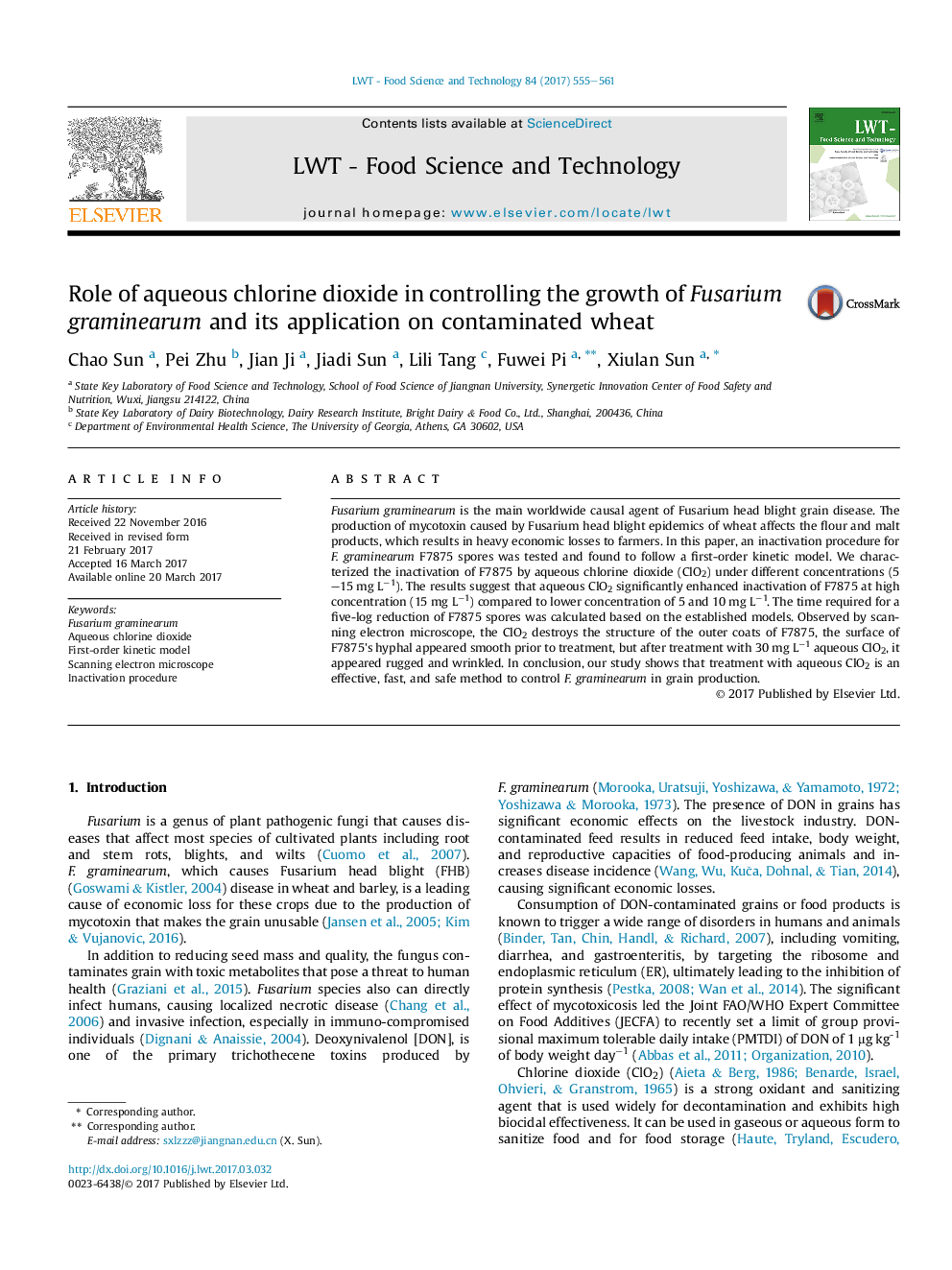| کد مقاله | کد نشریه | سال انتشار | مقاله انگلیسی | نسخه تمام متن |
|---|---|---|---|---|
| 5768976 | 1628514 | 2017 | 7 صفحه PDF | دانلود رایگان |

- Aqueous ClO2 was used to investigate the reaction behavior of F. graminearum.
- The first-order kinetic model determined the inactivation kinetics of F. graminearum spore.
- A disinfection method of aqueous ClO2 application on Fusarium graminearum contaminated wheat.
Fusarium graminearum is the main worldwide causal agent of Fusarium head blight grain disease. The production of mycotoxin caused by Fusarium head blight epidemics of wheat affects the flour and malt products, which results in heavy economic losses to farmers. In this paper, an inactivation procedure for F. graminearum F7875 spores was tested and found to follow a first-order kinetic model. We characterized the inactivation of F7875 by aqueous chlorine dioxide (ClO2) under different concentrations (5-15 mg Lâ1). The results suggest that aqueous ClO2 significantly enhanced inactivation of F7875 at high concentration (15 mg Lâ1) compared to lower concentration of 5 and 10 mg Lâ1. The time required for a five-log reduction of F7875 spores was calculated based on the established models. Observed by scanning electron microscope, the ClO2 destroys the structure of the outer coats of F7875, the surface of F7875's hyphal appeared smooth prior to treatment, but after treatment with 30 mg Lâ1 aqueous ClO2, it appeared rugged and wrinkled. In conclusion, our study shows that treatment with aqueous ClO2 is an effective, fast, and safe method to control F. graminearum in grain production.
Journal: LWT - Food Science and Technology - Volume 84, October 2017, Pages 555-561